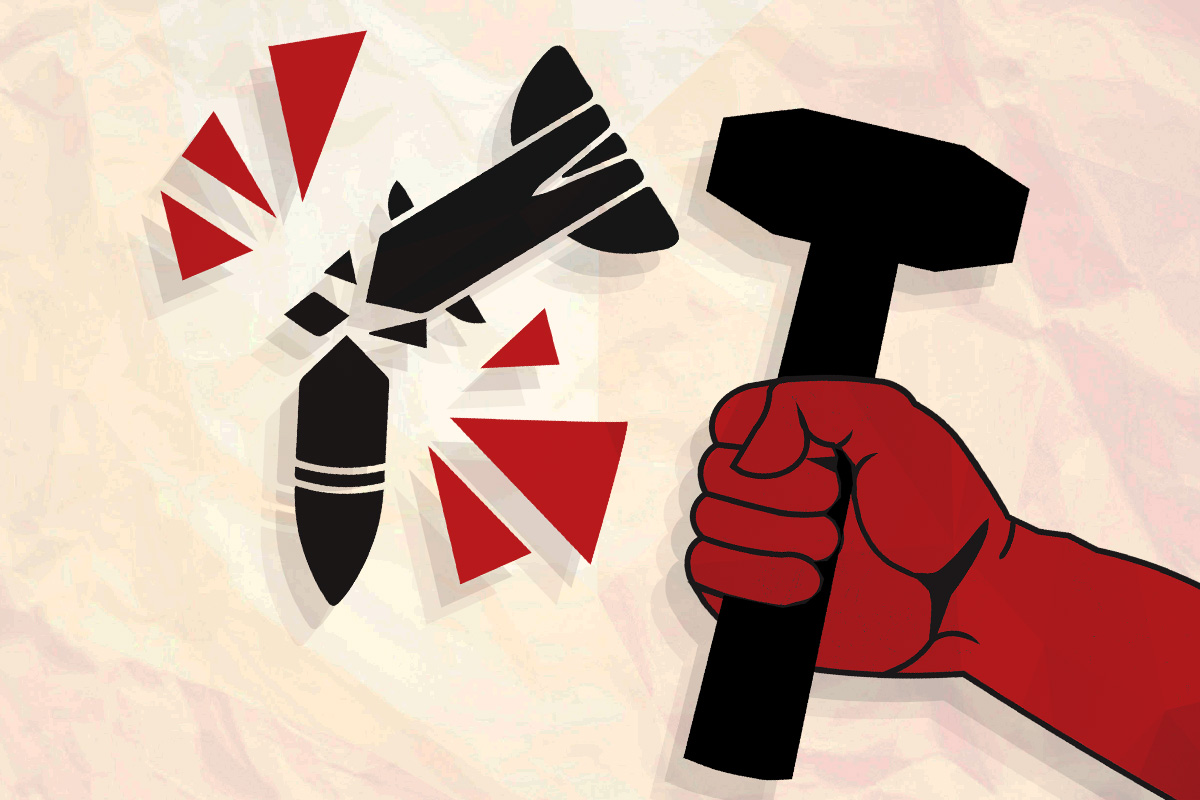
The Palestine solidarity movement is at a crossroads. Hundreds of thousands have marched in the streets demanding change, and these protests have been shrugged off by every major political party.
While Justin Trudeau now speaks of “grave concern” for Palestinians, the emptiness of these words is clear to see. Canada’s military exports to Israel continue to flow, business as usual reigns—even six bloody months into this genocide. “Canada stands with Israel.”
It is clear that marches, petitions, and letter writing campaigns are not enough. The state has not listened to moral appeals. It needs to be confronted in the language of force.
Inaction of union leadership
The organizations best suited to use this force right now are the trade unions. But the trade union leadership has done next to nothing for Gaza. Not one labour leader has put forward job action for Palestine.
A handful of unions such as CUPE and PSAC have recently come out specifically in favour of an arms embargo. But again, no action has been forthcoming.
Nothing can be shipped to Israel without thousands of workers cooperating together, operating the machinery, the trucks, the cranes, the computers, the jacks, and even the ships that result in the transport of arms to Israel. The working class can decide to stop the shipment of weapons used to carry out the genocide; it can bring all of society to a halt if it chooses.
Such job action would immediately deprive the Israeli war machine of these resources. But the labour leaders have been too cowardly to point to this as the way forward.
Strike for Gaza
Parts of the Palestine solidarity movement have recognized that weekly demonstrations are not enough. One section, under the banner “A15action,” initiated a “Coordinated Economic Blockade to Free Palestine” on April 15. Another initiative, #StrikeforGaza, was also put forward for the same day. It is a good step to see the language of class struggle front and center.
But the calls to action of #Strike4Gaza, while talking the language of class struggle, still indicated an individualistic view of action. Their website called on people “1) to abstain from business as usual (e.g., no spending, no work, no school, no banking); 2) to abstain from participation in any form of action that stimulates the economy.” This is not a strike.
Workers are only powerful when we act collectively. As individuals, we are powerless. Spending and banking are done individually, not collectively. Striking is the primary tool of the working class because it expresses our enormous collective power.
Did people refrain from spending and banking, skip school or work and attend a demonstration on April 15? Maybe. The government, the media, and the banks, didn’t seem to take notice.
A15action
What could not be ignored was the disruptions of the A15 actions. The group’s rationale states: “The global economy is complicit in genocide. Join participating cities in blocking the arteries of capitalism and jamming the wheels of production.”
In response to the call, dozens of small to medium blockades of ports, roads, and airports popped up around the world. Vancouver’s Deltaport was blockaded for hours by around 100 people. In Halifax, protestors blocked traffic before police broke up the demonstration and arrested 19 people. South of the border in Chicago, roads to the airport were blocked off by protestors on the morning of April 15, leading to dozens of arrests and airport traffic delays.
The A15 activists are correct to think that what is needed is to disrupt economic activity. The first task would be to end the shipment of weapons to Israel at North American ports. But a few hundred activists blocking a road or a port without the involvement of the workers is not the way to go. Stopping economic activity cannot be done from the outside. It is up to the workers themselves to bring their own workplace to a stop. Activists from the outside preventing workers from going to work runs the risk of garnering hostility from the workers, when the objective should be to win them over to the struggle for Palestine.
It is the workers that make “the wheels of production” turn. It is them that have the power to jam it. Not a wheel turns, not a light shines without the kind permission of the working class. What has been sorely missing from the movement so far is the weight of the working class acting collectively as a class.
Disarm imperialism
An enormous amount of pressure has built up, and millions of people want to fight for Palestine. The recent explosion on U.S. campuses is a testament to this.
Now, the working class must be brought into the movement, and the Palestine solidarity movement needs to make it its mission to make it happen. Calls for blockades and economic action need to be followed up by attempts to reach the workers, and persuade them to go on a political strike against genocide—to refuse to allow weapons that feed the Israeli war machine through their hands.
We saw a glimpse of this in the Indigenous movement back in 2020—in Vancouver, ILWU dockworkers respected a blockade initiated by Wet’suwet’en supporters. After a brief exchange, one ILWU worker said to an activist “well we want people to respect our picket lines so we should respect yours.”
In the case of Palestine, port workers in Spain, Italy, India, among others, took action to prevent shipment of arms to Israel. This is what we need to bring the movement forward in Canada. Collectively, it is the workers of the world who have the power to end this genocide.
Ultimately, the working class needs to dislodge the warmongers from power, and build a new society free from imperialism, war and exploitation.

